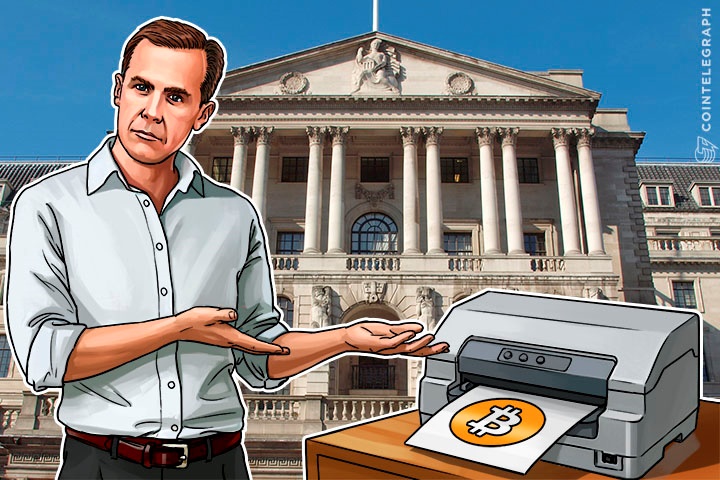Ahead of a session of key cryptocurrency experts in the UK witnessing before the Economic Affairs Committee of the Parliament on Tuesday July 19 to explore blockchain technology, the Bank of England has released a research paper that studied the macroeconomic consequences of issuing central bank digital currency (CBDC).
“I don’t see how banks could compete,” said Peter Stella, former central-banking head of the International Monetary Fund and director of Stellar Consulting LLC.
The Wall Street Journal suggests that a central-bank-issued bitcoin would be a “means for policy makers to completely control the amount of money in the economy, much like full-reserve banking.”
Is that really so? Let’s take a closer look at the Bank of England proposals.
Central bank issued digital currencies
Using a dynamic stochastic general equilibrium (DSGE) model calibrated to match the pre-crisis United States, the Staff Working Paper No. 605: The macroeconomics of central bank issued digital currencies finds that issuing a CBDC of 30% of GDP, against government bonds, could permanently raise GDP by as much as 3%, due to reductions in real interest rates, distortionary taxes, and monetary transaction costs.
Issued on Monday July 18, the paper by John Barrdear and Michael Kumhof studied the macroeconomic consequences of a central bank granting universal, electronic, 24x7, national-currency-denominated and interest-bearing access to its balance sheet via the issuance of a CBDC.
The paper says:
“Our analysis suggests that the only conditions needed to secure these gains are that a sufficiently large stock of CBDC is issued in steady state, and that the issuance mechanism for CBDC ensures that the central bank only trades CBDC against government debt instruments.”
Structural issues
A broader and qualitative analysis of the pros and cons of a CBDC regime by the researchers distinguished between structural issues, price and output stability issues and financial stability issues.
In the structural issues, they looked at risk and the level of interest rates; CBDC stock issuance arrangements, balance sheets, and real economic outcomes; CBDC flow issuance arrangements, fiscal policy, and real economic outcomes; reduced cost of providing transaction services; competition in payment services; competition in accounts services; final settlement and collateral; and time of operation.
In summary, they concluded on the basis of the preliminary discussion that it seems safe to assume that the implementation of a CBDC system would be a net positive for the steady-state economy, through the alleviation of a number of frictions.
Price and output stability issues
They looked at a second policy instrument. The zero lower bound on nominal policy interest rates; increasing interdependence of monetary and fiscal policies; and more and more timely, data under price and output stability issues.
The researchers, again, say it seems safe to assume that the implementation of a CBDC system would be a net positive for price and output stability, through the availability of a second monetary policy instrument that complements the policy rate.
Financial stability issues
In the financial stability issues, they looked at transition risks; the risk of a run from bank deposits to CBDC; the potential partial removal of Too Big To Fail concerns; the resiliency of the payment system; and the provision of more data on interconnectedness, and
The paper concludes:
“There is one very clear financial stability risk, that of mismanaging the transition to a new and as yet untested monetary and financial environment. Mainly for this reason, policymakers would clearly have to carry out a very careful due diligence before deciding on the transition to a CBDC regime. But if that due diligence found the transition risks to be manageable, a CBDC regime could be considered a serious option, given the many other sizeable benefits of CBDC identified in this paper.”
Is it a good idea after all?
Jon Sindreu of the Wall Street Journal is rather pessimistic about the whole idea, as it has long appeared false. First of all, since central banks started bond-buying programs in 2008 the amount of central-bank money has exploded, but no inflation has materialized.
Secondly, experiments to control the quantity of money in the 1980s, also ended in failure. And finally, the point of a digital currency is that it’s money without government.
Marco Streng, chief executive at Genesis Mining, says to WSJ:
“The key benefit is decentralization. The best scenario is where people would not necessarily need to trust the government, they would just need to trust the blockchain.”

